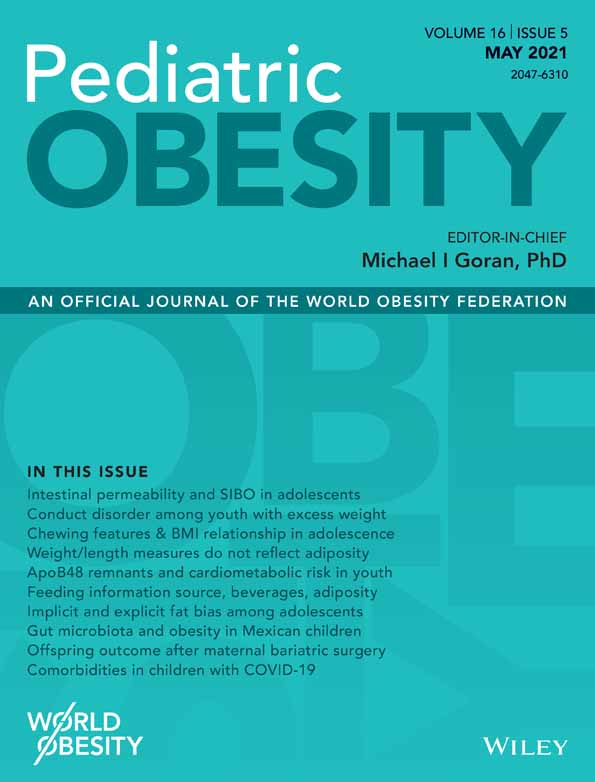ApoB-lipoprotein remnant dyslipidemia and high-fat meal intolerance is associated with markers of cardiometabolic risk in youth with obesity
Funding information: Alberta Health Services Health Outcomes Improvement Fund; Women and Children's Health Research Institute; GDCB was supported by an Alberta Health Services Chair in Obesity Research
Summary
Introduction
Cardiovascular disease (CVD) originates in childhood and risk is exacerbated in obesity. Mechanisms of the etiologic link between early adiposity and CVD-risk remain unclear. Postprandial or non-fasting dyslipidemia is characterized by elevated plasma triglycerides (TG) and intestinal-apolipoprotein(apo)B48-remnants following a high-fat meal and is a known CVD-risk factor in adults. The aim of this study was to determine (a) whether the fasting concentration of apoB48-remnants can predict impaired non-fasting apoB48-lipoprotein metabolism (fat intolerance) and (b) the relationship of these biomarkers with cardiometabolic risk factors in youth with or without obesity.
Methods
We assessed fasting and non-fasting lipids in youth without obesity (n = 22, 10 males, 12 females) and youth with obesity (n = 13, 5 males, 8 females) with a mean BMI Z-score of 0.19 ± 0.70 and 2.25 ± 0.31 (P = .04), respectively.
Results
Fasting and non-fasting apoB48-remnants were elevated in youth with obesity compared to youth without obesity (apoB48: 18.04 ± 1.96 vs 8.09 ± 0.59, P < .0001, and apoB48AUC: 173.0 ± 20.86 vs 61.99 ± 3.44, P < .001). Furthermore, fasting plasma apoB48-remnants were positively correlated with the non-fasting response in apoB48AUC (r = 0.84, P < .0001) as well as other cardiometabolic risk factors including HOMA-IR (r = 0.61, P < .001) and leptin (r = 0.56, P < .0001).
Conclusion
Fasting apoB48-remnants are elevated in youth with obesity and predict apoB48 postprandial dyslipidemia. ApoB48-remnants are associated with the extent of fat intolerance and appear to be potential biomarker of CVD-risk in youth.
CONFLICT OF INTEREST
The authors declare no conflicts of interest.




